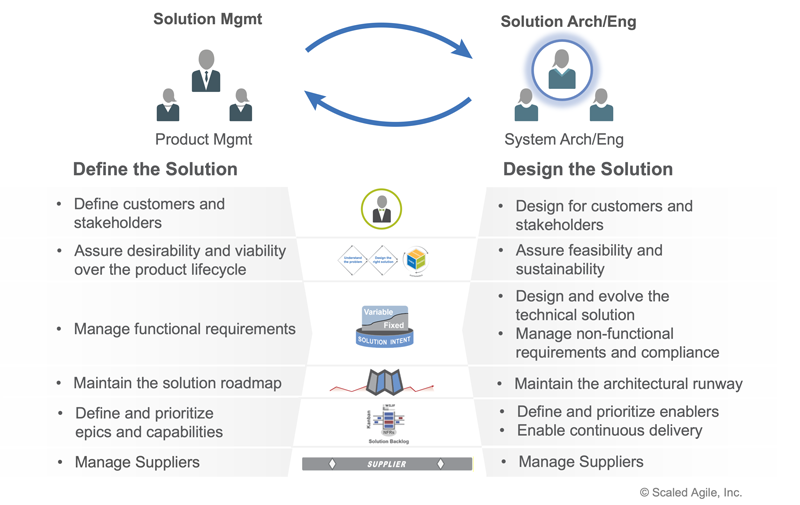Architecting really big IT and cyber-physical systems? Read the new Solution Architect/Engineering article!
Organizations use SAFe to build some of the world’s largest and most important systems. These include big IT systems that drive fintech and insurance, medical research, devices, products and systems, cyber-physical systems used in aerospace, defense, automotive, and more. To build these systems better and faster, many big systems builders rely on SAFe’s guidance, including the Enterprise Solution Delivery competency and Solution Trains model.
To support them better, we recently introduced new guidance for the critical role that the Solution Management role plays in guiding the build of these systems to meet their intended purpose. Previously, Solution Management and Product Management referred to the same knowledge base article. While the product management responsibilities certainly apply to both roles, Solution Managers have additional responsibilities based on the scale and cost of the solutions they build. We defined that better in the new article structure.
We’ve just completed a similar ‘split’ for the System and Solution Architect/Engineering (AE) roles. The systems these people build require substantial investment, are in operation for decades and are built by thousands of engineers across many internal and external suppliers. Most have stringent compliance constraints. Therefore, we needed to provide additional guidance for those architecting these critical systems. And of course, the Solution Management and Solution AE roles are cooperative and interdependent, as the figure below shows.

The new Solution Architect/Engineering article defines the additional responsibilities required of architects at this large scale. Of course, the traditional responsibilities such as system specification, decomposition, allocation, and interface management still exist, but, for example, they are now performed more collaboratively in Specification and Design Workshops. In addition, the Lean-Agile development context introduces additional responsibility for architects and engineers. These include:
- Apply Design Thinking and empathy for customers and end-users, including manufacturing and operations
- Enable continuous delivery to ensure the system is feasible and sustainable over its long life
- Use digital engineering and digital twins to accelerate learning in the virtual environment
- Align the technical solution across the supply chain
You can read the new article here.
Happy reading, and stay SAFe!
—Harry Koehnemann and the SAFe Framework team





